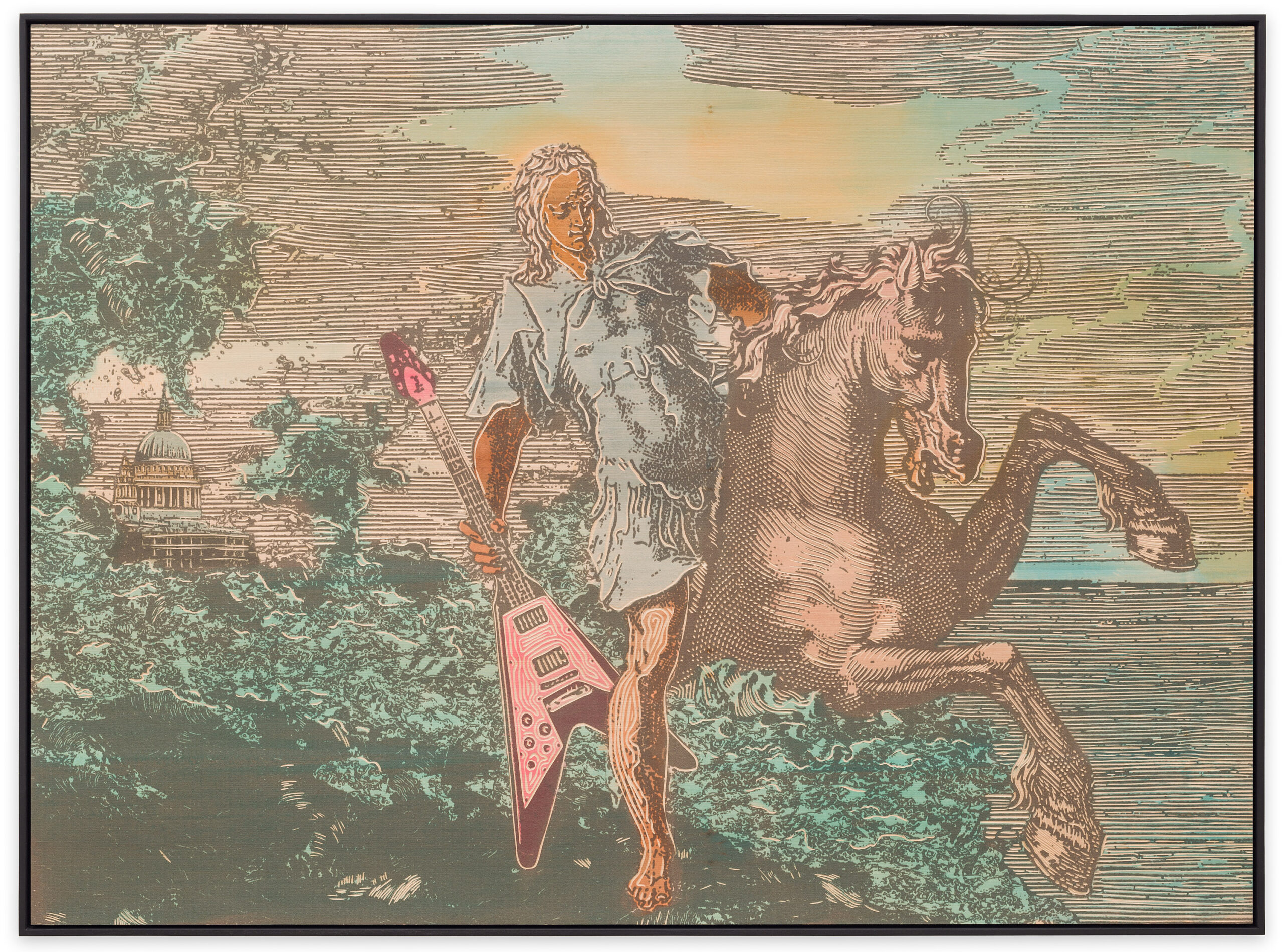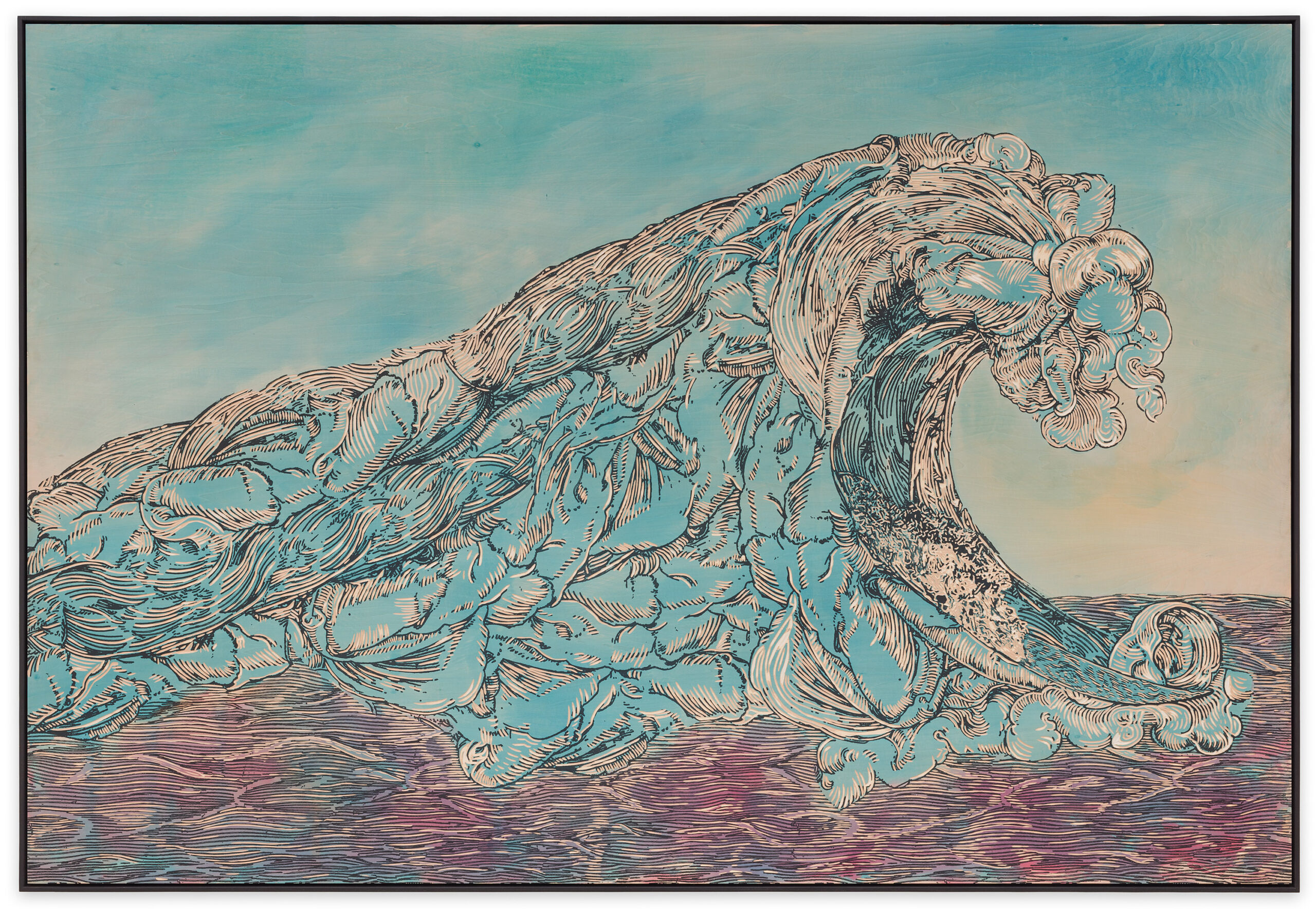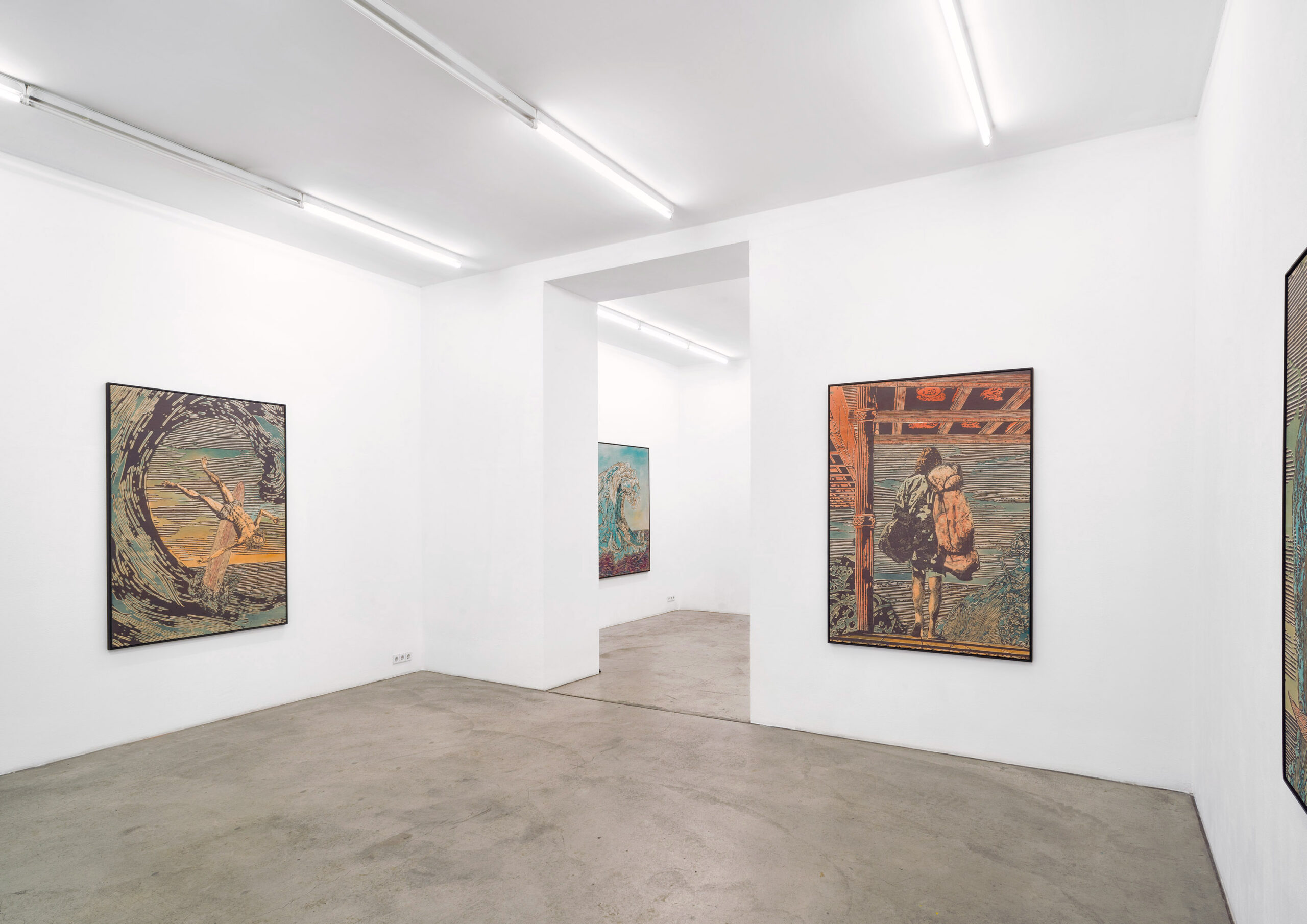
Hans Weigand
London Calling, 2016
Watercolor, ink on wood (printing plate)
128 x 173 x 3,8 cm
Hans Weigand führt in der Einzelausstellung in der Gabriele Senn Galerie sein utopisch-klassisches und kontrastreiches Bildvokabular weiter aus. Gezeigt werden ausschließlich aktuelle Arbeiten. Zu den wiederkehrenden Wellen stoßen wiederbelebte Ur-Techniken und Motive in Form von Holzschnitt und Malerei. Die Kunstform des Holzschnitts wurde durch Weigands Bedürfnis nach Entschleunigung hervorgerufen und hilft dabei seine metaphorische Reflexionen der Gegenwart zu umschreiben.
„Als Sinnbild für den ewigen Zyklus des Werdens und Vergehens, für kraftvolles Leben und unbezwingbare Urgewalt, als Symbol für Protest und Unberechenbarkeit, aber auch für die geheimnisvollen Tiefen unseres Unbewussten ist die Welle in der Kunst ein beliebtes Motiv. Von William Turner über Gustave Courbet bis zu Gerhard Richter begeisterten sich viele Maler für die stürmischen Wogen. […] Viele von Weigands Surfern scheint [das gleiche] Schicksal bevorzustehen. Sie stürzen ins Ungewisse, sind Synonym für Unabhängigkeit und Risikobereitschaft gleichermaßen. Dennoch ist ihnen oft Furcht und Schrecken ins Gesicht geschrieben, wenn die Brandung nach Brett und Reiter greift, um sie als Treibgut wieder auszuspucken. Weigand konterkariert das Image der Surferkultur, überzeichnet es mit antiken Mythologien und kippt die dunkle Kehrseite des ewigen Sommertraums hervor. Er zwingt uns, in seine mächtigen Wassermassen einzutauchen, reißt uns mit in die Tiefe unserer eigenen Assoziationen, bis das unterste nach oben gespült wird.“ (Silvia Höller, After the Gold Rush, 2016)

Hans Weigand
Geisterwelle aus dem 16. Jahrhundert, 2015
Watercolor, ink on wood (printing plate)
175 x 200 x 4 cm
In this solo exhibition at the Gabriele Senn Galerie, Hans Weigand elaborates on his utopian-classical and high-contrast visual vocabulary. The exhibition comprises only recent works. Recurring waves are fused with revitalised ancient techniques and motifs in the form of woodcarving and painting. The use of woodcarving as an art form was triggered by Weigand’s need for a slower pace of life and helps to outline his metaphorical contemplations of the world today.
‘As an allegory of the eternal cycle of genesis and demise, of vibrant life and indomitable elemental force, as a symbol of protest and unpredictability as well as of the mysterious depths of our collective subconscious, waves are a popular artistic motif. Many painters from William Turner and Gustave Courbet to Gerhard Richter are enthralled by these storm swells. […] Many of Weigand’s surfers seem destined to meet [the same] fate. They throw themselves into the unknown, are equally synonymous with independence as with risk-taking. Nevertheless, their faces are often filled with fear and terror when the surf lunges at the board and its rider, ultimately spitting them out as floating refuse. Weigand flies in the face of the stereotypical surfer culture image, infuses it with antique mythologies and brings the dark flip side of the eternal dreams of summer to the fore. He forces us to immerse ourselves in his massive bodies of water, he draws us into the depths of our own associations until the deepest layers are flushed to the surface.’ (Silvia Höller, After the Gold Rush, 2016)




